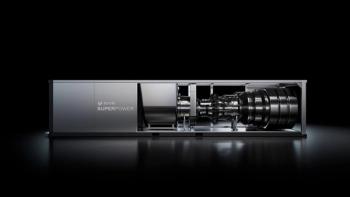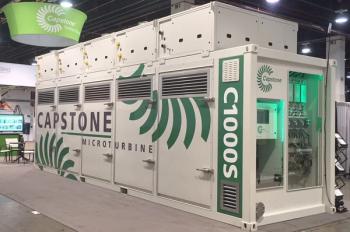
Dry gas seal options for toxic and flammable applications
There are many field-proven options which are currently available for use in toxic and/or flammable gas applications. In this section we will discuss the following systems:
- Tandem seals for dry gas applications
- Tandem seals for saturated gas applications
- Tandem seals with interstage labyrinth and nitrogen separation gas
- Double seal system for dry gas or saturated gas applications
Gas from the compressor discharge enters the port closet to the compressor (labyrinth end) and the majority of the gas enters the compressor through this labyrinth. To ensure that process gas, which is not treated by the dry gas system, does not enter the seal chamber, velocities across the labyrinth should be maintained between 6-15m/sec (20-50 ft/sec). It is the writer’s experience that considering labyrinth wear, the design should be closer to 15m/sec (50ft/sec).
Approximately 1.7-3.4 Nm3 /hr (1-2scfm) flow (standard cubic feet per minute) leak across the first tandem seals faces (primary seal) and exit through the primary vent. Based on the backpressure of the primary vent system, 1.7Nm3r/hr(1 scfm) or less will pass through the second tandem seal faces (secondary seal) and exit through the secondary vent. To ensure that oil mist from the bearing housing does not enter the dry gas seal chamber and that seal gas does not escape to atmosphere, an additional barrier seal is used and provided with pressurized nitrogen at approximately 35kPa (5psi).
Dry gas seal reliability depends on the condition of the gas entering the seal faces. The function of the seal gas supply system for any dry gas seal option is to continuously supply clean, dry gas to the seal faces. During start-up, when the compressor is not operating with sufficient pressure to supply the seals, and alternate source of gas or a gas pressure booster system should be provided.
These items are typical for any type of dry gas seal application. Note that the following options exist regarding the primary, secondary vent and barrier seal instrumentation and components:
- Primary seal vent triple redundant (two-out-of-three voting) flow or differential pressure alarm and shutdown.
- Primary seal vent rupture discs in parallel with vent line to rupture at a set pressure and prevent excessive pressure to the secondary seal on primary seal failure.
- Spring loaded exercise valves in the primary vent line to exert a backpressure on the primary seal to close the faces in the event of dynamic ‘O’ ring hang-up.
- Secondary vent line flow or differential pressure alarms and trips.
- Barrier seal supply pressure alarm and permission not to start the lube oil system until barrier seal minimum pressure is established.
The changes required for a saturated gas are solely in the seal system. A typical system incorporates a cooler and separator and heater in addition to the normal components used for a dry gas application to ensure that saturated gas does not enter the seal chamber. Typical values for the cooler are to reduce the gas temperature to 30.F below the saturation temperature of the gas. The typical dimensions for the separator vessel, complete with a demister, are 460mm (18 inches) diameter and 1.8 meters (6 feet) high. The typical requirements for the heater are to reheat the gas to 15.C (30.F) above the saturation temperature. Temperature transmitters are provided upstream and downstream of the cooler, and downstream of the heater. As a precaution, in the event of the cooler or heater malfunction, a dual filter/coalesce, complete with a drain back to the suction, is provided.
The present (2010) industry ‘best practice’ tandem seal arrangement for dry or saturated gas applications features a labyrinth between the primary and secondary seals. This action ensures that gas vented from the secondary seal will always be nitrogen, since the nitrogen supplied between the primary and secondary seals is differential pressure controlled to always be at a higher pressure than the primary seal vent, thus ensuring that only nitrogen will be in the chamber between the primary and secondary seals.
Double seal system for dry gas or saturated gas application
In a double seal used in either dry gas or saturated gas applications where the process gas is not permitted to exit the compressor case, gas can be used after it is conditioned, or an external source if it is compatible with the process gas. If the gas is used between the seals is toxic or flammable, a suitable barrier seal, provided with nitrogen, must be used.
Since there are significant advantages to the use of dry gas seals, many units are being retrofitted in the field with such systems. In many cases, significant payouts can be realized.
If a unit is to be retrofitted, it is strongly recommended that the design of the gas seal be thoroughly audited to ensure safety and reliability. Retrofitting from a liquid to a gas seal system renders the unit a separate system type unit, that is, a separate lube and gas seal system. Naturally, loss of lube oil into the seal system will result in significant costs and could result in seal damage or failure by accumulating debris between the seal rotating and stationary faces. The design of the separation barriers between the lube and seal face must be thoroughly examined and audited to ensure reliable and safe operation of this system.
Many unscheduled field shutdowns and safety problems have resulted from the improper design of the lube system, seal system separation labyrinth. In addition to the above considerations, a critical speed analysis, rotor response and stability analysis (if the operating discharge pressure is above 3,450 kPa [500 psi] should always be conducted when retrofitting from liquid to dry gas seals.
Newsletter
Power your knowledge with the latest in turbine technology, engineering advances, and energy solutions—subscribe to Turbomachinery International today.





